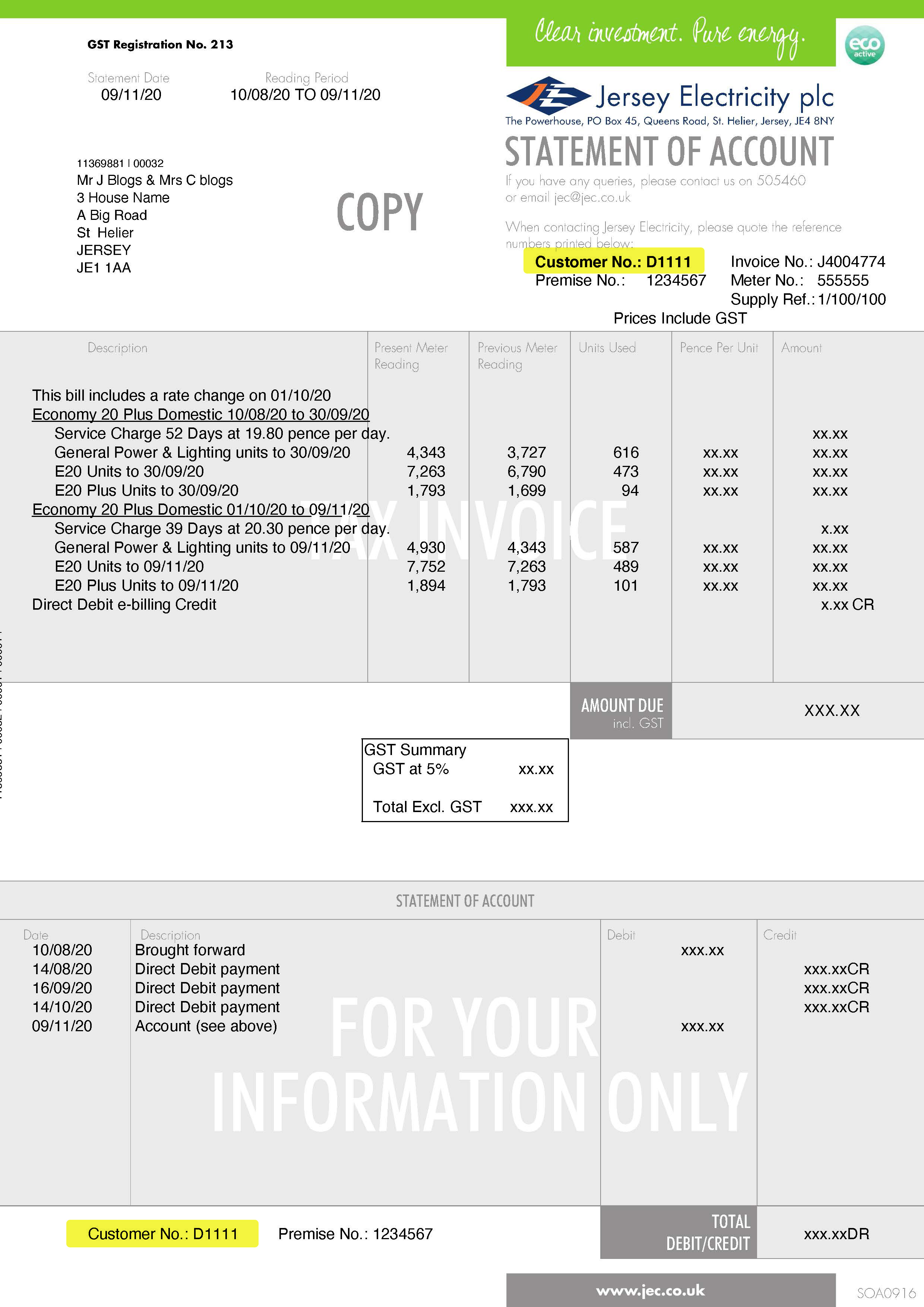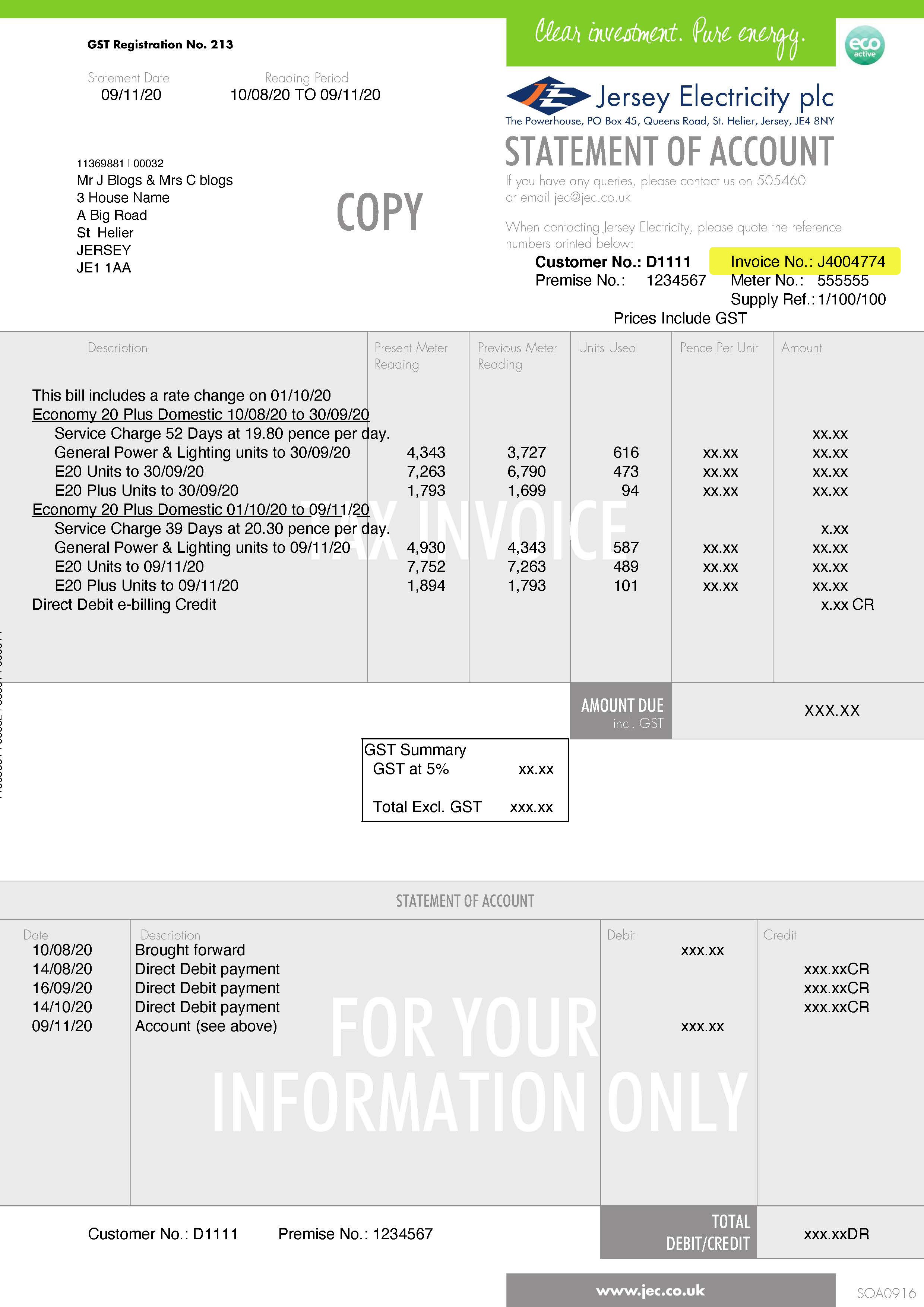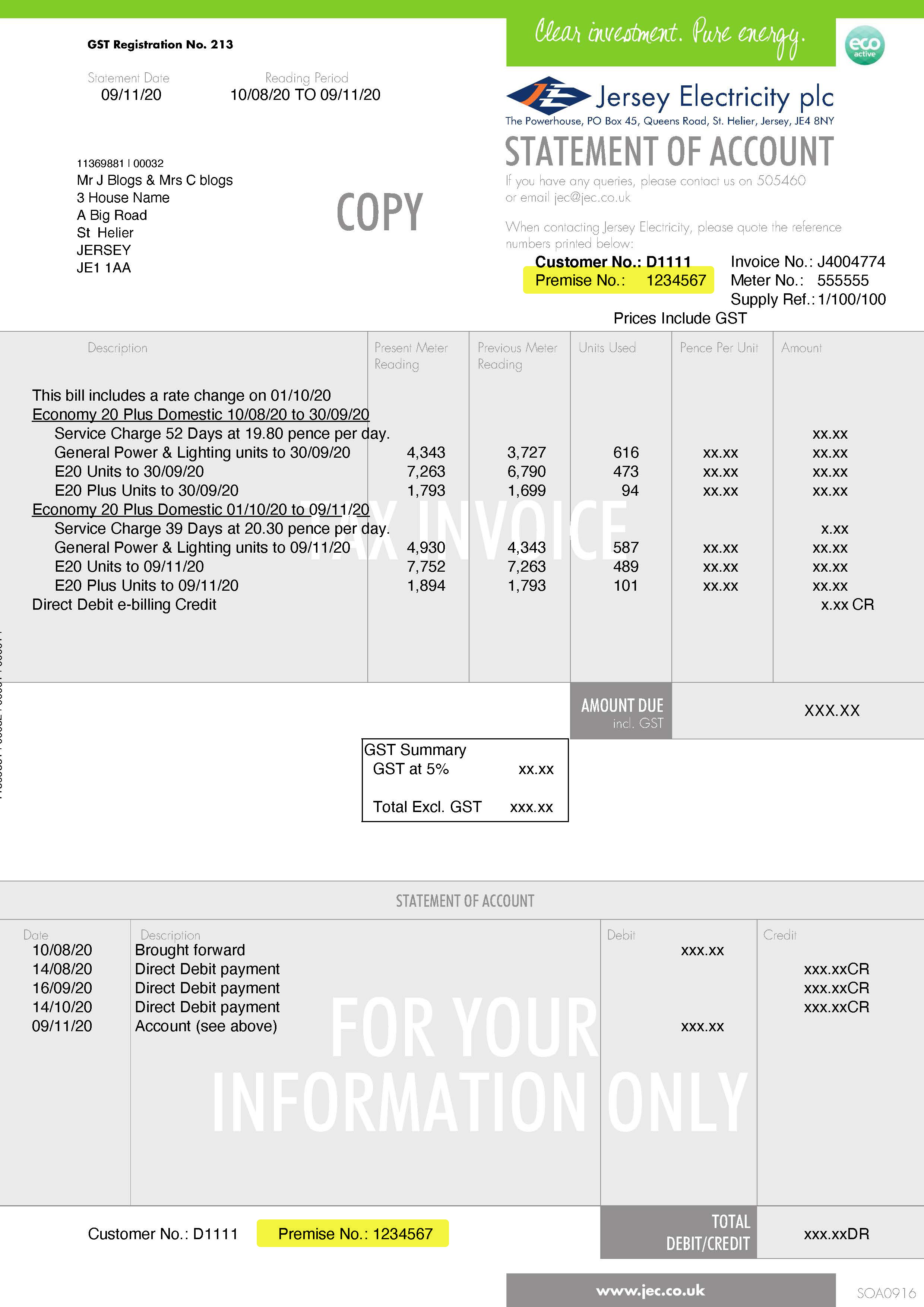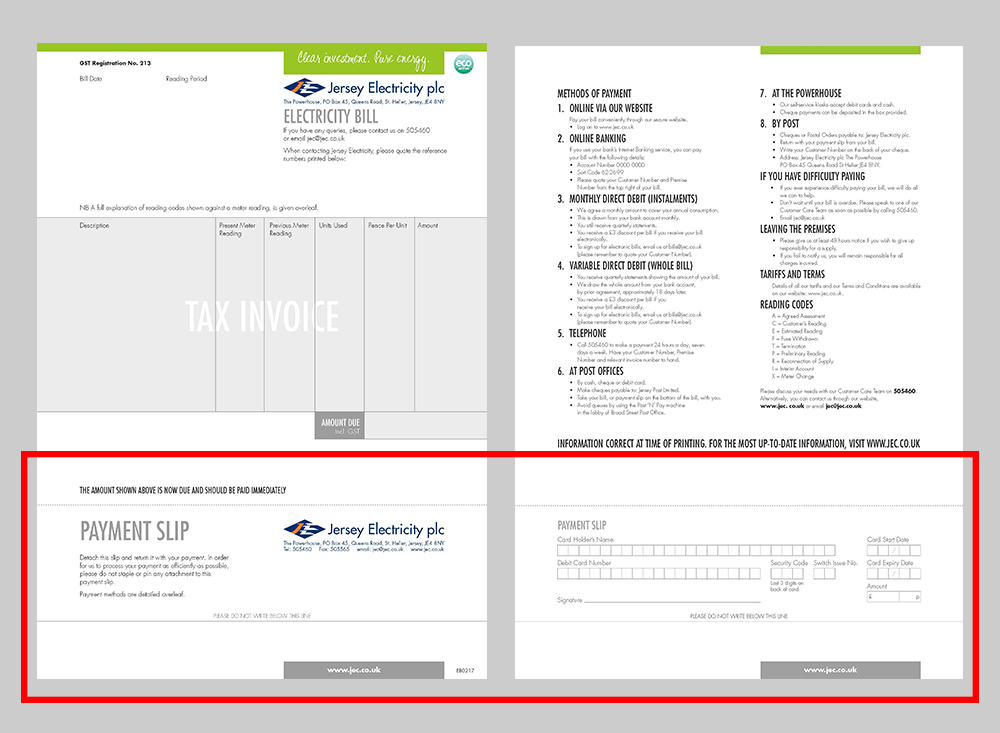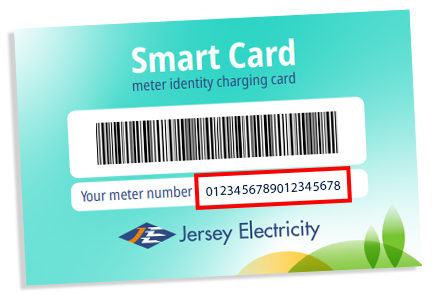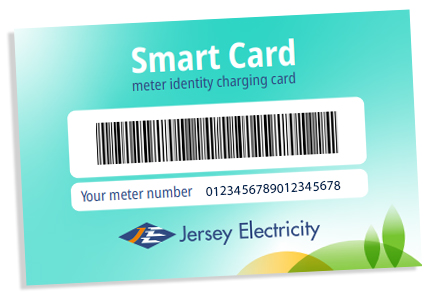Understanding the Standby Charge
On this page we explain what the Standby Charge is, why it is needed, who has to pay it and how much it is.
We also answer some questions that we've been asked by our customers.
FAQs
What is the Standby Charge?
The Standby Charge is for Commercial customers who generate their own electricity, but may require backup services from Jersey Electricity’s grid when they are unable to generate sufficient power to support their operational needs.
To meet these needs, our services are 'on standby' for these customers.
The Standby Charge covers a fair share of the costs required to keep these services on standby, including:
- Transmission and Distribution network costs
- Standby power capacity (such as that provided by La Collette Power Station)
Why is the Standby Charge needed?
Customers with their own on-site generation consume fewer units from Jersey Electricity. However, their peak demand remains the same because their own generation cannot be guaranteed to be operating all of the time.
Maintaining the standby service to provide additional power when required incurs costs which are not covered by the customers' standard tariff. This is why a Standby Charge is levied.
Failing to recover these costs would lead to other customers paying for a disproportionate share of them, leading to higher electricity prices.
Who has to pay the Standby Charge?
The Standby Charge applies to Commercial embedded generators (EmGs) which are:
- Connected in parallel to our network after 1 May 2019
- Up to a facility size of 70kWp 3 Phase / 20kWp Single Phase
- Approved by Jersey Electricity under Engineering Recommendations G83/2 or G59/3, depending on the rating of the generator
The Standby Charge applies irrespective of whether the premise with an EmG is on the Green Export Guarantee.
We will determine the Standby Charge for Commercial installations greater than 70kWp on a case-by-case basis. This includes Commercial installations with multiple connected EmGs that have a combined total output equal to or greater than 70kWp.
Typical kWp refers to the maximum rating of the EmG (wind turbine / photovoltaic / combined heat and power systems).
How much is the Standby Charge?
The Standby Charge is 14.03 pence (incl. GST) per kWp of embedded generation per day for installations up to 70kWp.
We will determine the Standby Charge for Commercial installations greater than 70kWp on a case-by-case basis.
Customer questions
Doesn’t the Daily Service Charge cover network costs?
No. The Daily Service Charge covers energy support services such as metering, billing and Customer Care.
The unit cost of electricity covers the cost of the electricity itself, whether imported from France or generated here, and the infrastructure and network costs associated with bringing it to your premise.
Are JE just trying to make money out of customers who need less of their electricity?
No. If Commercial customers with embedded generation who require backup services and power from the grid did not contribute a fair share of the fixed costs associated with those services, the burden would fall on all other customers to meet them.
We believe it is unfair to expect customers who do not have embedded generation, or who cannot afford to install it, to bear the cost of maintaining an electricity network on behalf of those customers who do have embedded generation. In effect, they would be subsidising those with embedded generation.
When will the Standby Charge come into effect?
Jersey Electricity twice deferred the implementation of the Standby Charge until the completion of a Government of Jersey-commissioned independent review of the charge.
Commercial Embedded Generators (EmGs) connected in parallel with Jersey Electricity's network after 1 May 2019 will incur a Standby Charge of 14.03p (incl. GST) per kWp of embedded generation per day for installations up to 70kWp, irrespective of whether the premise with EmG is on the Buy Back Tariff.
We will determine the Standby Charge for Commercial installations greater than 70kWp on a case-by-case basis.
What about companies that have already installed EmGs, or are about to?
Commercial solar PV systems installed and in-service before 1 May 2019 are ‘grandfathered’ and will not be subject to the charge until change of ownership, facility upgrade or asset replacement.
Why won’t this charge apply to all existing Commercial customers with embedded generation?
We didn’t feel it was correct to retrospectively charge existing Commercial customers who did not pay an availability charge before 1 May 2019, as they would have used the historic tariff information when making their initial decision to install embedded generation.
Why will existing installations become subject to the charge if the property changes hands?
New customers will be advised of the Green Export Guarantee and Standby Charge as they currently stand when they apply to take over a property, as per our existing processes for all new customers.
What impact will this have on a community scheme (as described in the Energy Plan)?
This will depend on the nature of the project. Once clear, we can assess impact and come to a decision that is fair to everyone.
What will happen to the money raised by the Standby Charge?
This is not a money raising exercise. The Standby Charge is set to ensure everyone pays their fair share of network maintenance costs, and to help ensure tariff stability. The income raised will go towards funding network infrastructure on a sustainable basis.
Will the Standby Charge apply to Domestic customers with PV installations, for example?
We currently have no plans to charge Domestic customers for embedded generation such as Solar PV, which are generally 6kWp or less. However, we will keep the situation under review.
How do you decide what is Domestic and what is Commercial?
Domestic or Commercial installations are determined by their current designation on Jersey Electricity’s Customer Database. However, the Company reserves the right to apply the Standby Charge for installations that clearly fall within the bounds of Commercial scale whatever the customer / premise designation.
Doesn’t local generation such as PV improve security of supply?
A typical PV or renewable installation does not provide any material benefit in terms of security of supply. Such installations will not lead Jersey Electricity to removing standby generation from the grid system and, therefore, will not lead to lower security costs.
For example, JE has peak demand on its system at around 9.30pm on a dark, winter evening. At that time solar PV will not assist security of supply: it cannot generate at times when demand is highest on the system. Similarly, wind generation is also intermittent and cannot be relied up during these peak winter demand periods.
In the UK solar PV is essentially accorded no security of supply value by either Ofgem or National Grid.
This is not helping to support the Government of Jersey's position on reducing the Island’s carbon emissions.
JE’s importation strategy has been instrumental in reducing Jersey’s overall carbon emissions by around 40% over the last 25 years. Electricity supply in Jersey is now less than one tenth of the carbon intensity of the UK electricity grid and we believe it may become even lower in the future.
Subsidies for renewable energy have been offered by governments in many countries, including the UK, to incentivise the decarbonisation of their electricity grids – though these are now rapidly being withdrawn. Jersey has already virtually decarbonised its electricity system to such low levels that the provision of costly, artificial subsidies would have little effect, if any, on Jersey’s carbon emissions.
Replacing imported low carbon electricity with embedded generated electricity will not materially reduce your carbon profile. The opportunity for the Island to reduce its carbon emissions really lies in fuel switching and reducing its dependence upon the use of hydro carbon-based energy sources. Having said this, Jersey Electricity is willing to connect embedded generators as long as this is done on terms that are fair and equitable to all customers.
The report ‘Developing an approach to Domestic Energy Efficiency Retrofit in Jersey’ by Ricardo-AEA, commissioned by the Government of Jersey, noted that:
"In order to determine in what areas of the economy capacity may need to increase, it is necessary to understand which measures are most likely to mitigate carbon emissions, reduce fuel poverty and contribute to energy security on the Island.
"Jersey has a low-carbon electricity supply (from predominantly nuclear generation in France) so a switch from gas or oil to electric heating will result in significant carbon savings.
"As Jersey has low-carbon electricity supply, a change from electrical resistance heating to an Air Source Heat Pump (ASHP) will reduce emissions by 2/3 (based on a Coefficient of Performance of 3 for ASHPs) but starting from a low initial level. Reductions will be much greater when switching from oil or LPG to an ASHP. The order could change if ranked instead by emissions, or by cost."
To use an analogy, leaving your bicycle at home and walking to work will not make any difference; you are already doing a low carbon activity.
How does this link with JE’s Social and Environmental Responsibility?
Jersey Electricity takes environmental issues very seriously. We already import almost one third of our annual energy (approx. 200 million units) from certified hydro-electricity sources - which supports Jersey’s Energy Plan and carbon reduction targets - and have done so for many years.
Jersey Electricity has invested significantly over the last 30 years, and we continue to invest in providing affordable, low carbon energy to all its customers, benefiting the whole community.
What energy saving measures should I consider investing in?
If you are already running an all-electric home, you are running a low carbon home.
There are, however, many technologies available, including:
- Wind turbines
- Micro combined heat and power
- Solar thermal
- Solar PV
- Air source heat pump
- Ground source heat pump
Which is best for you depends on your personal circumstances, but the report ‘Developing an approach to Domestic Energy Efficiency Retrofit in Jersey’ by Ricardo-AEA, commissioned by the Government of Jersey, noted that:
"Using our experience of retrofit and applying this to the Jersey context, we estimate that there are seven key measures which could deliver substantial savings in space heating demand and these are ranked in order of energy saved.
- Cavity wall insulation where missing, where appropriate
- Limited solid wall insulation, where appropriate
- Loft insulation - installation or upgrade (if below 100mm) as needed to remaining properties
- Window upgrade
- Replacement of hydrocarbon boilers with air source heat pumps or electrical resistance heating
- Replacement of electrical resistance heating with air source heat pumps
- Heating control upgrade."
In all instances we recommend you seek professional help and guidance before making a decision.
